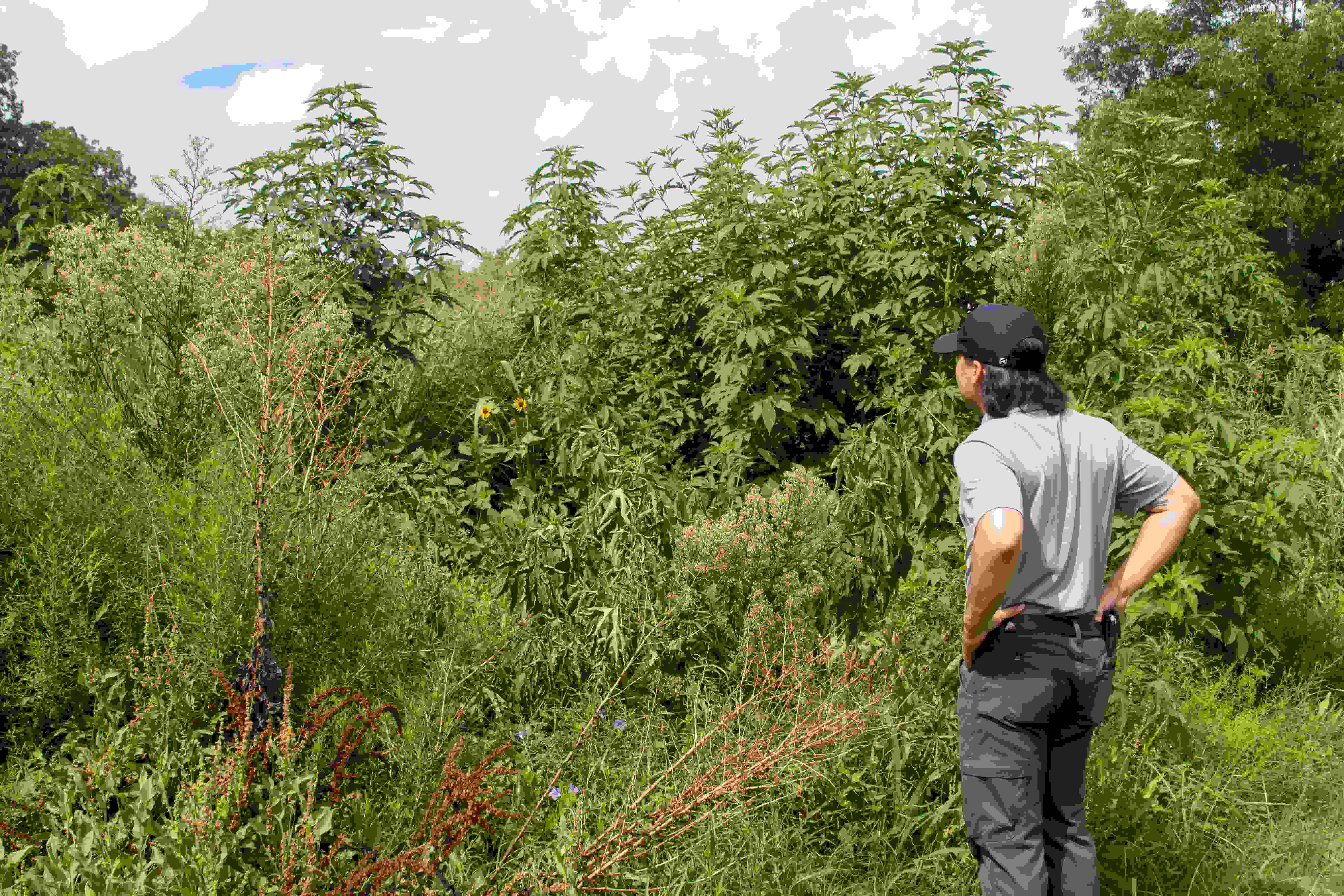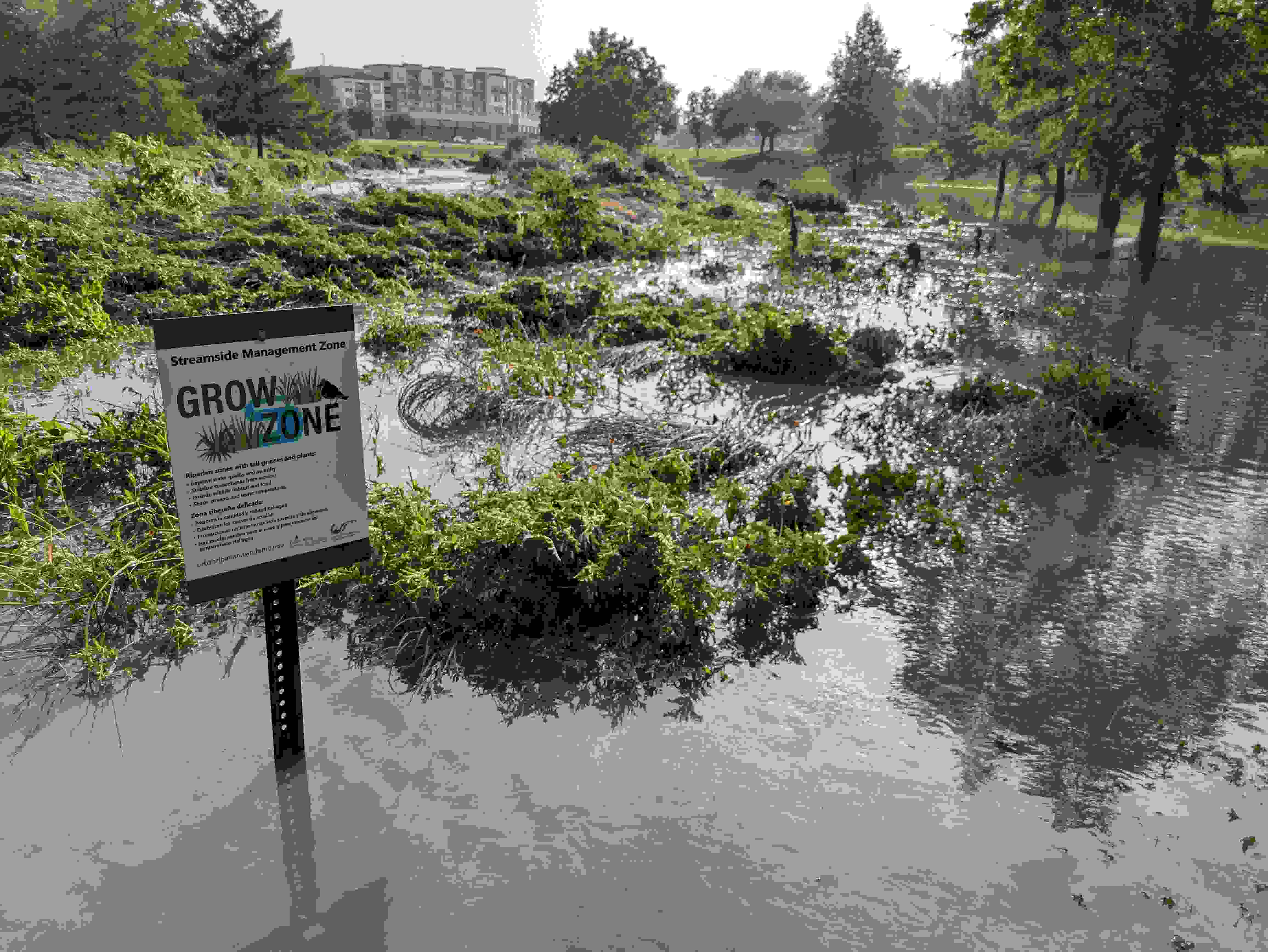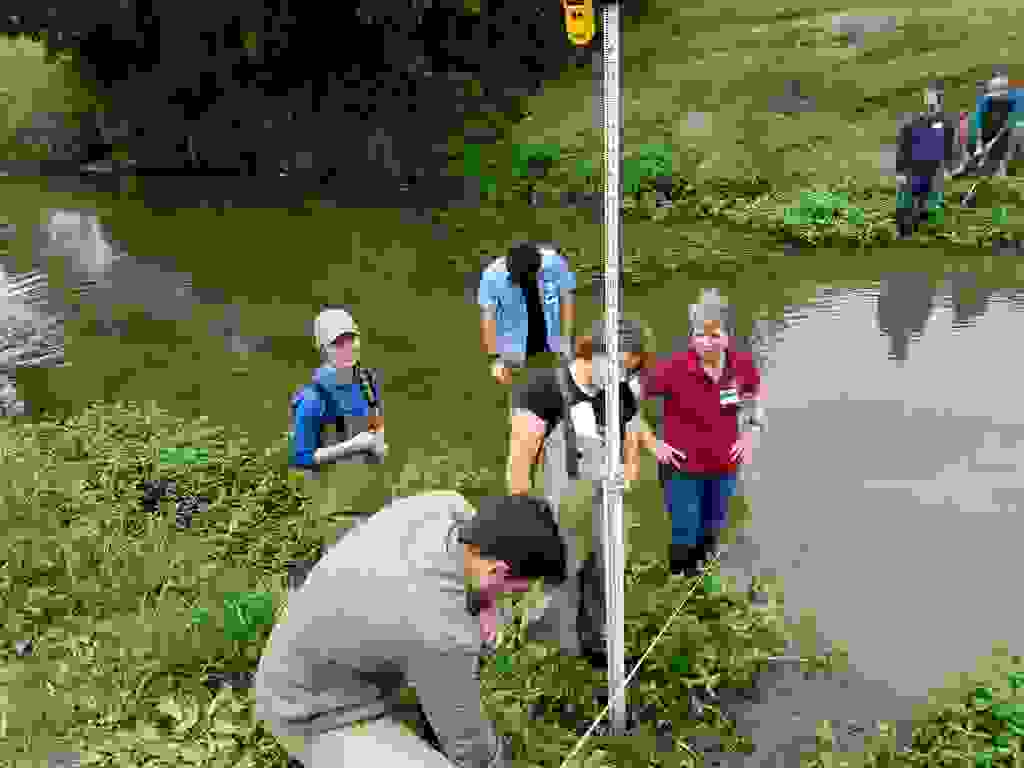Frisbee golf players throw neon frisbees across the bubbling creek, parents push children in strollers around hilly sidewalks and joggers complete laps around the park block — a typical evening at Wolf Pen Creek Park in College Station is full of activity. At the center of it flows the creek, surrounded by lush vegetation, where Texas Water Resources Institute (TWRI) scientists are demonstrating key management practices for healthy streams.
Can growing certain plants around an urban creek benefit the entire ecosystem?
Yes, says Alexander Neal, TWRI program specialist and the leader of the project, which is a partnership between the City of College Station and TWRI.
The Grow Zone explained
Traversing alongside 850 feet of Wolf Pen Creek is the Grow Zone, an area in which native plants have been seeded and mowing has been halted. Allowing native plant growth can benefit the stream by reducing erosion, improving the habitat for wildlife and increasing water quantity and quality.
“This Grow Zone is one of many best management practices that can be done in parkland settings or just around where we have stormwater infrastructure to help slow down erosion and provide opportunities for pollinators,” Neal said.
The area was previously covered in regularly mowed turfgrass, which, due to its shallow roots, provided the stream banks little protection from the powerful force of flowing water. The native plants have deep roots that can stabilize the stream banks and slow the water, decreasing erosion.
This project is a demonstration site for the Urban Riparian and Stream Restoration program, an educational program supported by TWRI and the Texas Riparian Association. The program trains people in natural stream design, a method of stream restoration that engineers the stream back to its natural state.
The Grow Zone provides a first-hand demonstration of those restoration principles put into practice.

Native plants grow and progress
Less than a year into the project, a stroll around the Grow Zone shows visible improvements. Pollinators can be seen buzzing around the wildflowers, and the stream banks appear more stable, Neal said. Grow Zone signs indicate the area, allowing park-goers to observe the stream’s recovery first-hand.
“The educational component of this is to show citizens, stakeholders, folks in the city, anyone who is going to come by this park the benefits, beauty and aesthetics of having native plants and to show that we're reducing erosion, and we're also getting more pollinators back,” Neal said.
The project has not been without difficulty, however. Two intense flooding events after the initial planting caused concern. Rushing water flooded pedestrian pathways and covered the entire Grow Zone with water and debris. Most of the plants survived, a testament to their resilience, and the flood provided a unique observation opportunity.
“A few of us got to go out there while the flood water was receding, and we saw a lot of native fish species that were swimming in the flood plain," he said. "A lot of them were finding cover in our Grow zone to avoid being predated upon, so I got to see the fish actually using the Grow Zone for cover."
Because Wolf Pen Creek Park is designed to drain large amounts of stormwater during heavy rainfall events and floods, restoring the stream banks with native vegetation could have a major stabilizing impact during future flood events and keep the natural creek banks functioning properly for years to come, Neal said.

Evaluating the Grow Zone’s impact
Soon, detailed monitoring of erosion for the project area will begin. In addition to the Grow Zone demonstration area, the project also includes a “control” area directly upstream on the creek, where previous management practices are still being used and the turfgrass is regularly mowed. Neal and the project team will monitor conditions in both areas and then compare erosion in the Grow Zone to erosion in the control zone.

The monitoring will use the following methods:
- Erosion pins - metal pins placed in the ground to observe how the banks erode over time.
- Cross sections - snapshots that assess how elevation at a location of the stream changes over time.
- Band Erosion Hazard Index - an index that considers root conditions, plant coverage, and shape of the bank to assess stream stability.
- Wolman Pebble Count - looks at material type and size to classify the stream type, which can predict how the stream will change.
Neal says the long-term goal of the project is to show the benefits of urban stream restoration and encourage the application of these practices in other urban areas.
“I would hope that this will show not just the benefits of a grow zone, but also the benefits of being stewards for our streams that are in our cities, and to treat our water really as one resource,” Neal said.
The project is funded by the Texas Commission on Environmental Quality and the City of College Station Parks and Recreation Department.







